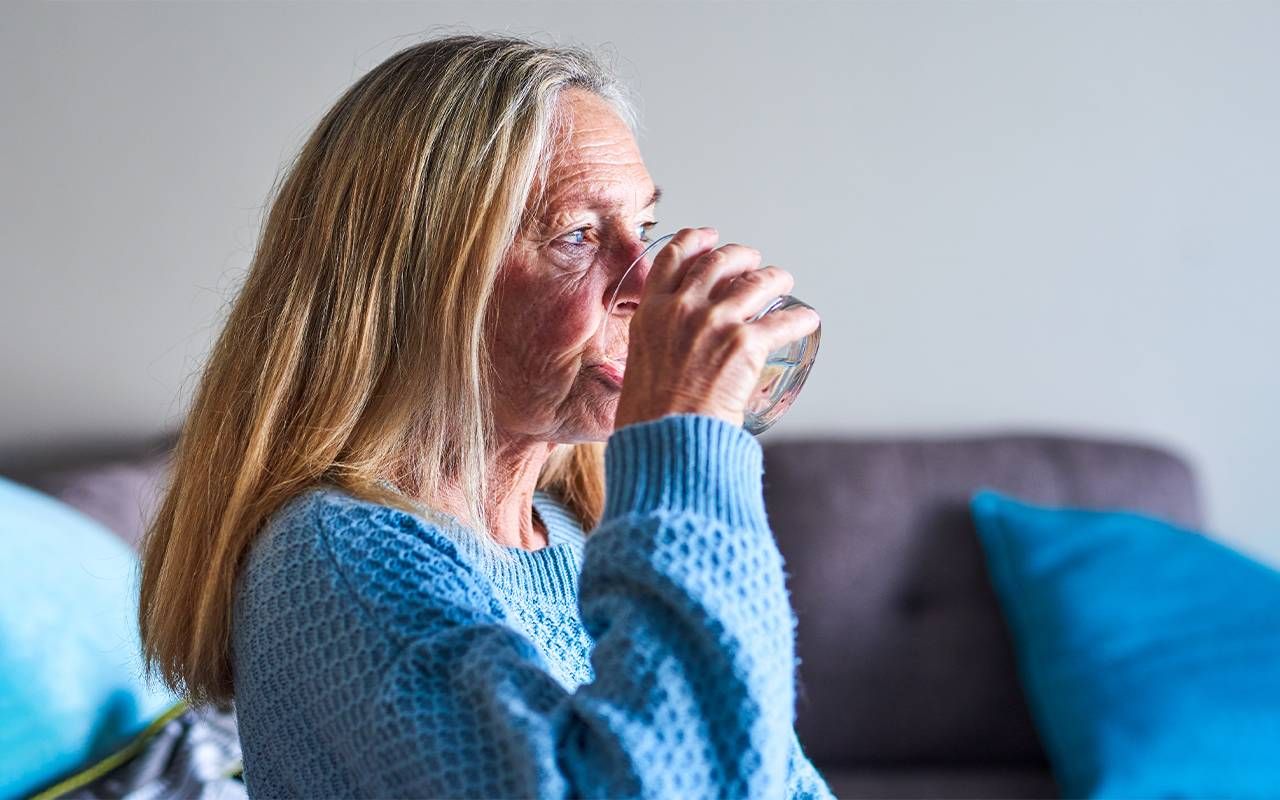The Physical Toll on a Caregiver's Body
From your back to your knees, here's what you can do to prevent injuries and take care of yourself
When my husband, Larry, lost his ability to move his body due to dementia, I became his guide and assistant. Getting in and out of bed, transporting him to appointments or family events, and managing routine activities at home required my body to help his, and my back was often aching.

I wasn't prepared for the physical abuse I would endure. As a result, I ended up with rounds of physical therapy (PT), which meant many appointments, exercise lists and ice packs alternating with heating pads. All of this added to my long to-do list and took away from time with Larry.
Much is written about psychological stress on caregivers but little about the physical stress they endure.
When I went to PT, they would ask, "How did this injury happen?" I'd explain that I was the primary care partner for my husband, and that was taking a toll on my body. Hearing this, they would move to their usual practices of treating the ache or pain, disregarding the opportunity to teach me how to avoid injury in the first place.
Much is written about psychological stress on caregivers but little about the physical stress they endure. Yet, caregivers, many with already aging bodies or pre-existing conditions, regularly place their bodies in stressful situations. What can be more mentally stressful than being in pain along with everything else?
After I tore the meniscus in my knee and couldn't enjoy a family vacation, I realized that I was unprepared, not to mention unfit, for a job I never wanted in the first place. That's when I began to search Dr. Google for tips to avoid personal injury while caring for people with mobility issues.
I found information and videos that helped me learn better body mechanics to adapt to Larry's unique challenges.
I found information and videos that helped me learn better body mechanics to adapt to Larry's unique challenges. While embarrassed, I was unaware of the many assistive devices available. Once I found them, packages arrived daily with grab rails, toilet bars and tub benches. To my relief, Larry had something to hang on to instead of me.
I know I'm not alone. In most cases, family members do not choose to be caregivers, so when it comes to this 24/7 responsibility, they are left to learn even the most basic caregiving skills, including preventing injury to themselves.
Lance A. Slatton, CSCM, a senior case manager at Enriched Life Home Care Services in Livonia, Michigan, and host of the award-winning YouTube show and podcast "All Home Care Matters," has first-hand knowledge of the need for more education for family caregivers.
He says, "Our dementia tool kit workshop is a favorite. It informs attendees of equipment and practical things for making assistance like transport easier. People come to our dementia conferences because they are not getting the information they need from their health care providers. There is something seriously flawed with that."
Several articles by the National Institutes of Health describe the various transitions of needs placed on caregivers with the term "The Caregiver Trajectory." It describes the demands for care as linear, progressive changes or non-linear, short-term changes.
Dementia is a linear pattern. Things don't get better. My husband was getting frail as my body was aging. Experts in a National Academies article, "Families Caring for an Aging America," inform us that "the trajectory begins with an emerging awareness of the caregiver that there is a problem."
"Over time," the authors continue, "this evolves into increasing care needs as the recipient requires assistance with household and self-care tasks." The article concludes, "The tasks required of the caregiver are cumulative over time. Each phase of the trajectory brings with it new challenges that the caregiver must confront."
Without professional education from our health care providers, it's up to caregivers to do whatever they can to mitigate injuries.
Our bodies are one of our most essential tools as care partners. Without professional education from our health care providers, it's up to caregivers to do whatever they can to mitigate injuries and, hopefully, make things a bit easier.
Let's start with some awareness of body mechanics without making it feel like another heavy lift (pun intended). I asked Bradley Zasada, physical therapist with Allina Health, what he would recommend if he taught a course called Body Mechanics 101 for Caregivers.
Without taking a breath, he recommended strength training. "After age 65, the body loses strength faster than it can build it," he said. "It's not too late to start strengthening bones and muscles." Zasada suggests finding 20 to 30 minutes two or three times a week "to take a break for yourself and do weightlifting on machines in a gym or with elastic bands in your home, anything with the push/pull mechanics."
Even doing regular activities provides creative alternatives to build strength and endurance. Movement experts say we use push, pull, squat, carry and hip-hinge body mechanisms. Unloading the dishwasher, opening a door, carrying groceries, bending to pick something from the floor or even sitting and standing at the toilet are opportunities to accomplish two goals simultaneously.
A quick search online provides techniques for making the best use of strength-building options while moving safely throughout the day without causing injury. Even small bursts of activity can release endorphins that will improve your overall mood while building stamina.
Sometimes, it's hard to think of exercises when you are exhausted and tired, but consider 30 minutes twice a week compared to the hassle of running to PT appointments to treat injuries. You may have to find your way to the right resources and techniques.
Physical therapists can create a plan designed for your unique situation if asked. Of course, consulting a doctor before you jump into anything is always advised (pun intended).


